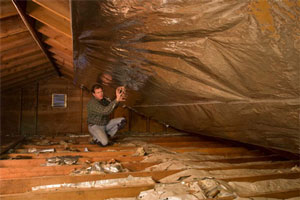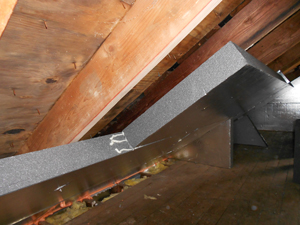In Business Since | License #
In Business Since | License #



Installing a heat mirror. The shiny surface of a radiant barrier reflects radiant energy but won't slow the movement of heat by convection or conduction.
An attic radiant barrier works just like the foil-faced shade you place inside a car’s windshield.
Both devices reflect radiant heat to reduce temperatures in interior spaces. Other names for an attic radiant barrier include “attic barrier insulation” and “radiant barrier insulation.”
But unlike true insulation materials (cellulose, foam & fiberglass) that slow heat transfer by conduction, a radiant barrier is designed to reflect radiant energy.
Interested in installing a radiant barrier in your home? Contact Dr. Energy Saver for professional service and guaranteed results!
Homes aren’t typically built with attic radiant barriers in place; they must be added later. Research has shown that the greatest benefits from an attic barrier come in warmer climates where air conditioning is required most of the time. In these regions, adding an attic radiant barrier can cut your cooling expenses by nearly 20%.
An attic radiant barrier can also be beneficial in colder climates, especially if the attic contains ductwork and the radiant barrier is bonded to foam insulation (see “Choose your barrier,” below).
Radiant barriers designed to save energy in buildings come in several forms. Each form has certain advantages and limitations.
Have you decided on the barrier that's right for you? Call your local Dr. Energy Saver to get started on installation - and energy savings!
Looking for a price? Get a no cost, no obligation free estimate.